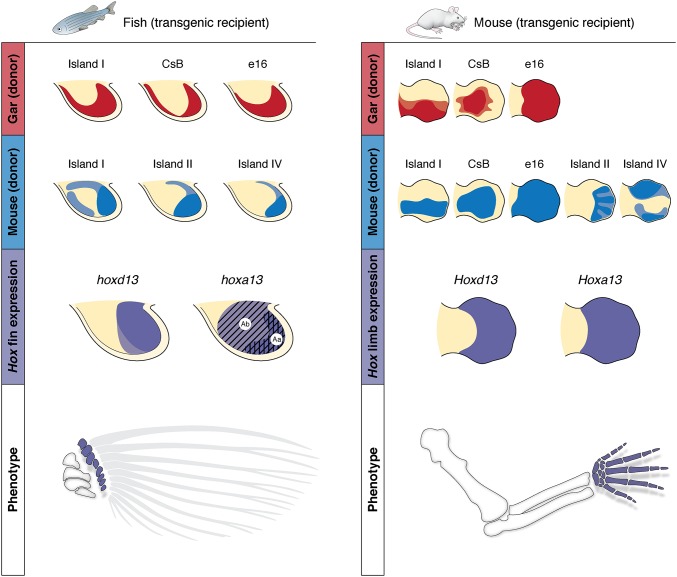Fig. 5.
Summary and comparison of transgenic animals and their implications for the origin and evolution of the autopod. Transgenics and expression dynamics for fish (Left) and mouse (Right). Patterns driven by gar enhancers are drawn in red; mouse enhancer activity is drawn in blue. Late phase enhancers from gar drive distal fin expression in transgenic zebrafish, whereas late phase enhancers from mouse drive various patterns of autopod expression in mouse (row 1). When introduced into zebrafish, autopod enhancers from mouse (row 2, Left) drive reporter expression in the same distal compartment of the pectoral fin as the endogenous fish enhancers (compare rows 1 and 2, Left). Transgenic mice carrying late phase enhancers from gar (row 1, Right) show patterns of reporter expression throughout the autopod that are nearly identical to the endogenous activity from mouse (compare rows 1 and 2, Right). The comparative regulatory data shown here define the late phase Hox expression from fish and mouse (row 3) as homologous. Row 4 depicts a hypothesis of homology between the area of future distal radials in fish fins and the autopod of tetrapods (shown in purple), supported by the expression and chromatin conformation data reported here.

